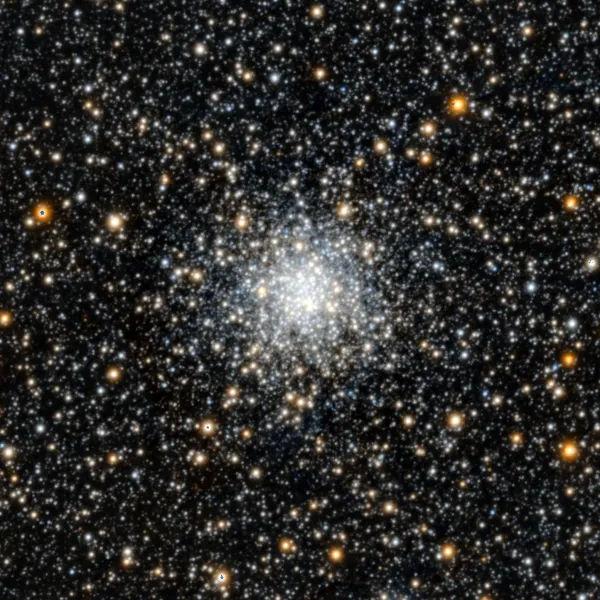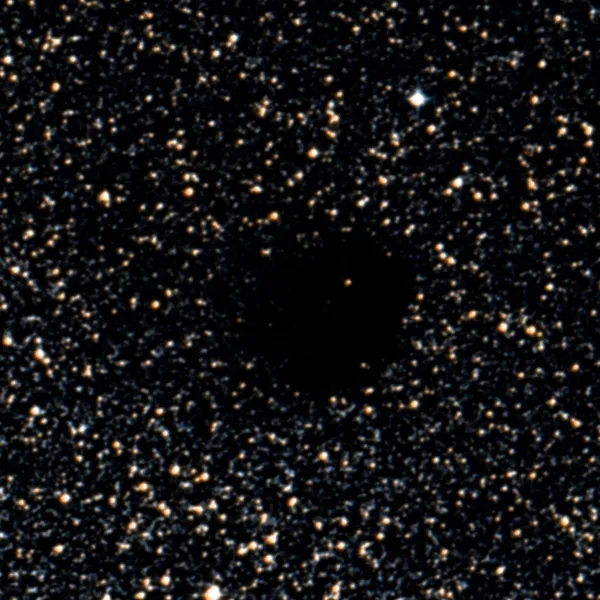Globular Cluster NGC 6638, Planetary Nebula NGC 6644, Dark Cloud Barnard 98
Globular Cluster NGC 6638

The globular cluster NGC 6638 was discovered by William Herschel on 12 July 1784 and listed as I 51 with the description: «Considerably large, round, very bright in the middle, easily resolvable.» [463] John Herschel observed it on 29 July 1834 (sweep 474) from the Cape of Good Hope and listed it as h 3748 with the description: «Bright, small, round, pretty suddenly brighter in the middle; diameter in RA = 4.5'; barely resolved; a very delicate object; doubtless a globular cluster.» [11]
| Designation | NGC 6638 |
| Type | GCL (VI) |
| Right Ascension (J2000.0) | 18h 30m 56.2s |
| Declination (J2000.0) | -25° 29' 45" |
| Diameter | 7.3 arcmin |
| Visual magnitude | 9.2 mag |
| Metric Distance | 9.400 kpc |
| Dreyer Description | globular, B, S, R, rr |
| Identification, Remarks | WH I 51; h 3748; GC 4412; GCL 95; ESO 522-SC30 |
Planetary Nebula NGC 6644

The planetary nebula NGC 6644 was discovered by Edward Pickering on 13 July 1880 using the 15-inch refractor and a direct-vision spectroscope at Harvard College Observatory. This was first of 17 planetaries he found using this method. He noted «its disk is so small that it can scarcely be detected with an ordinary eyepiece even if brought into the field of view.» [364]
| Designation | NGC 6644 |
| Type | PN |
| Right Ascension (J2000.0) | 18h 32m 34.7s |
| Declination (J2000.0) | -25° 07' 42" |
| Diameter | 0.2 arcmin |
| Photographic (blue) magnitude | 12.2 mag |
| Visual magnitude | 10.7 mag |
| Metric Distance | 3.067 kpc |
| Dreyer Description | planetary, stellar |
| Identification, Remarks | PK 8-7.2; ESO 522-PN33; CS=15.9 |
Dark Cloud Barnard 98

In 1919 Edward E. Barnard published his discovery of dark nebulae in «On the Dark Markings of the Sky». This nebula is listed as number 98 with the notes: «Very small; sharply defined.» [239] In 1962 Beverly T. Lynds published a compilation of 1802 nebula in her «Catalogue of Dark Nebulae» that she found on photo plates of the «National Geographic Palomar Observatory Sky Atlas». This nebula is listed there with the designation LDN 239. [473]
| Name | Barnard 98 |
| Object Type | Dark Cloud (nebula) |
| Right Ascension (J2000.0) | 18h 33m 23s |
| Declination (J2000.0) | -26° 01' 20" |
| Identifiers | Barnard 98; FEST 2-328; IRAS 18302-2603; LDN 239; [CB88] 148 |
Finder Chart
The globular cluster NGC 6638 is located in the constellation Sagittarius, roughly 40 arcminutes east of the star Kaus Borealis (λ Sagitarii). It is on 29 June in opposition to the Sun. It can best be seen in the months February to December.
Visual Observation
400 mm Aperture: In the 21 mm Ethos eyepiece (85x, 70' field of view), the globular cluster NGC 6520 cannot be resolved into individual stars, but appears as a spherical, diffuse nebula that becomes brighter towards the centre. At higher magnification (13 mm Ethos eyepiece, 138x, 43' field of view), individual stars can be recognised in the peripheral area. The planetary nebula NGC 6644 is recognisable in the 21 mm Ethos and appears in the 13 mm ethos as a small disc, barely larger than the surrounding stars. The dark cloud Barnard 98 could not be consciously perceived. — 400 mm f/4.5 Taurus Dobsonian, Falera, 6. 9. 2024, Bernd Nies
